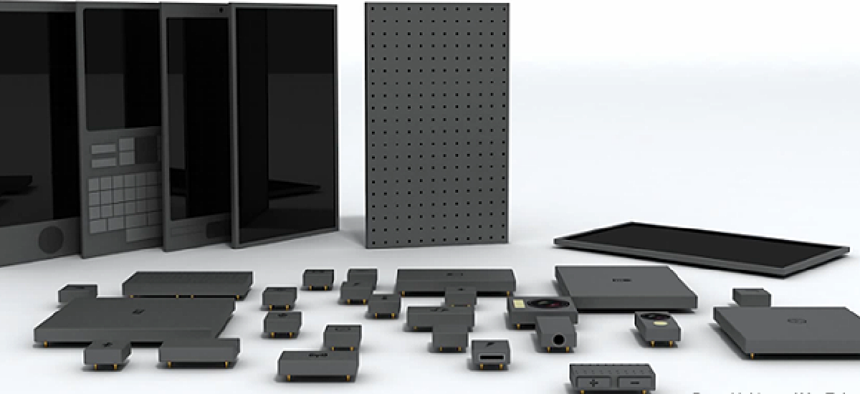New phone on the block

The Phoneblok is an open platform device made of detachable and replaceable component blocks such as memory, battery, camera, speakers.
An Internet inventor, or perhaps dreamer, named Dave Hakkens has a pretty cool idea about how phones should work. According to Hakkens, phones should be created a la carte, with each component plugging into a master board. This would allow individual parts to be replaced as they wear out or need upgraded, without replacing the entire phone. It would also allow individual users to design their own components. His idea is called a Phoneblok.
Hakkens isn't an engineer, and doesn't pretend to be able to build such a phone. But he's gotten almost a million people to support his idea through the Thunderclap website, which lets people socially “back” projects they might buy. Then if the project gains a critical mass of interest, that evidence can be shown to funding companies as proof of concept to get things built. No money is involved with Thunderclap, so it requires less of an endorsement than Kickstarter, where backers have to pony up money.
For feds, a Phoneblok would be a perfect BYOD phone. Those who needed a bigger screen or a faster processor could configure one exactly how they wanted. And those who aren't allowed to have a camera in their workplaces could simply leave that block blank or fill it with something more useful, like a bigger hard drive or a more powerful speaker.
Some have commented on Hakkens’ YouTube page that Phonebloks would be impossible to build, as components couldn't share a common interface due to wildly different power and data interfaces. And given current technology, that's probably true. But I think the point of the Thunderclap program is to show that this cool idea could be the next big thing.
For those who think that Phonebloks might be impossible, I submit the humble Raspberry Pi for consideration. This little $25 computer came from nowhere a few years ago, and now people are using it as the brain power for everything from electric cars to weather monitoring stations to filming wildlife with infrared cameras at night. My guess is that if given some type of platform to work with, the world would come up with lots of uses for a Phoneblok — and even individual components for it.
So what do you think? Could Phoneblok be the next big thing, or are they simply the unrequited longings of a technology dreamer?
NEXT STORY: What's next for GIS: The fourth dimension





